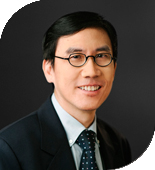报告题目: Materials Design for the Anode of Lithium-ion Batteries
报告人:Prof. Jim Yang LEE
新加坡国立大学,化学与生物分子工程系主任
报告时间:2013年9月18日(周三)上午 9:30
地点:独墅湖校区 907-1101
欢迎广大师生参加!

Abstract
The lithium-ion batteries are unquestionably the most advanced rechargeable batteries in the market today. They are also the most favorite battery chemistry for vehicle electrification and utility grid integration. However, the storage requirements for these large scale applications far exceeded the capability of current lithium-ion batteries which are designed for portable and mobile electronic products. While engineering solutions may provide some relief of current needs, continual development has to depend on materials innovations. This presentation will discuss some of the materials design principles that we have learned from working with lithium-ion battery anode materials over the last two decades. The discussion will focus on the improvement of high capacity anode materials, especially their rate performance, cycle stability and initial capacity losses. Examples will be drawn mostly from our work on alloy anodes, conversion oxide anodes and titanium-based intercalation anodes.
About the Speaker
Dr. Jim Yang LEE is currently Professor and Head of Department of Chemical and Biomolecular Engineering at NUS. He is a faculty of the NUS Graduate School and a Senior Principal Fellow at the Energy Studies Institute. He is also a member of the Technical Committee for Chemistry, Singapore Standards Committee.
He graduated from the University of Singapore with first class honors, and received his Master and Ph.D degrees from the University of Michigan at Ann Arbor.
On research Jim Yang focuses on materials for lithium-ion batteries, and regenerative fuel cells such as rechargeable metal-air and lithium-sulfur batteries. He also works on the shape and size-controlled synthesis of nanometals emphasizing on structural control. His other interests include forward osmosis membranes and carbon dioxide conversion processes.
He is a member of the American Institute of Chemical Engineers (AIChE), American Chemical Society (ACS), Materials Research Society (MRS) and the Electrochemical Society (ECS). He is an Associate Editor of Industrial & Engineering Chemistry Research and is an Editorial Board member of Energy Technology.
